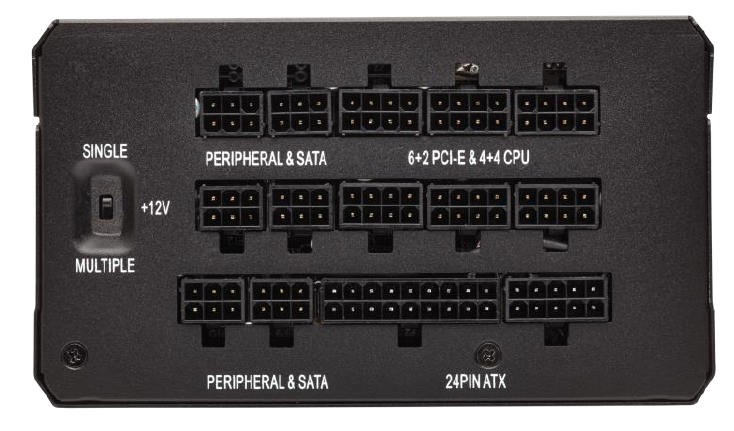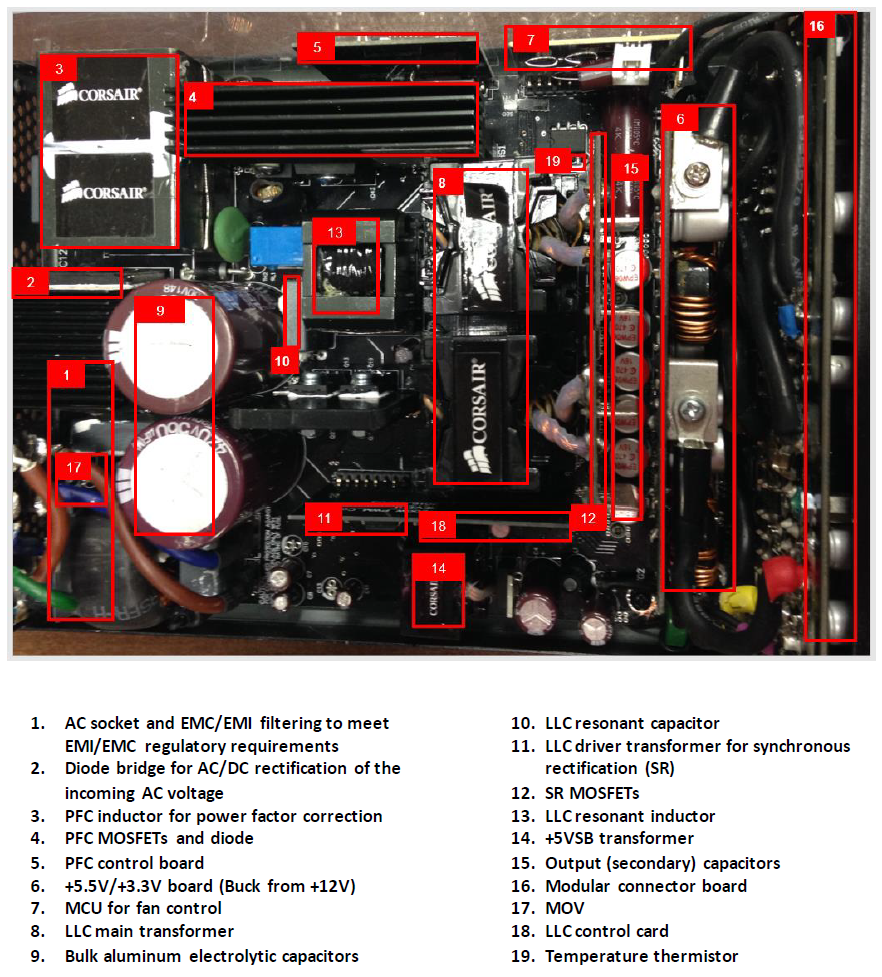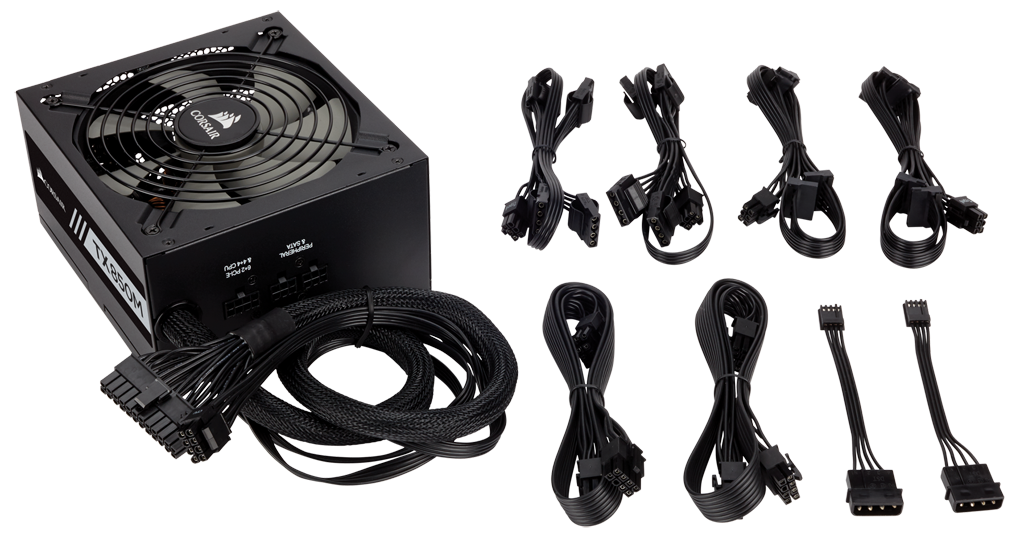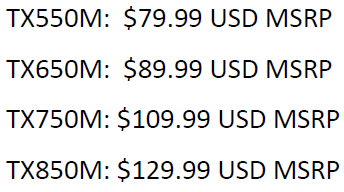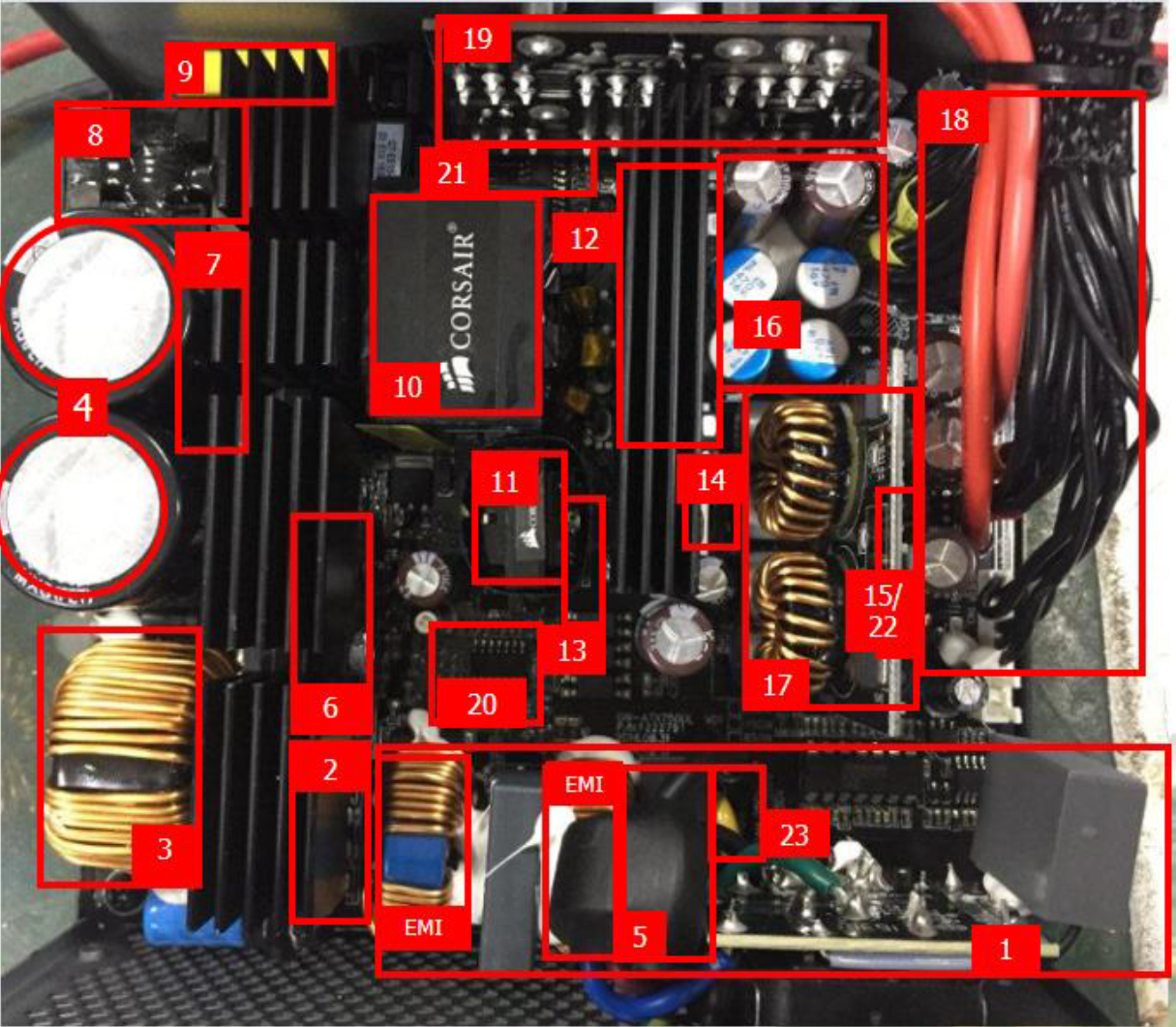Corsair's New HX And TX PSUs
Corsair announced the release of two new PSU lines, the HX and TX, which promise high reliability, top performance, and decent prices, given their features and specs.
Corsair revealed two new PSU lines, the HX and TX. That's right, the TX line returns again with refreshed models, but let's start first with the HX model, which is higher in Corsair's portfolio.
HX Series PSUs
Corsair said the HX units are based on an updated platform that is electrically superior to the HXi lineup (update 6 Jan 17: Corsair's PSU PM informed us that actually the HX models are similar to the HXi ones with only the digital link circuit missing, so their platforms are identical). The lack of the "i" in the model name indicates that there's no Corsair Link compatibility, which means the PSUs don't offer software monitoring or controls, but a hardware switch allows the device to be toggled between a single +12V rail and multiple rails. A 135mm Fluid Dynamic Bearing (FDB) fan is used, supported by a semi-passive mode. The HX units boast a fully modular cable design, Japanese caps rated at 105°C are used for the internals, and the models come with a 10-year warranty. (They're also 80 PLUS Platinum certified.) This new series creates stiff competition for the HXi lineup by offering equal performance at a lower price.
The table above shows the differences between the new HX models, the HXi lineup, and the highly popular RMx units. The HX and HXi PSUs have similar prices, with the exception of the HX750 model, which will cost $30 less.
This table shows the power specs of all members of the HX line. All of them can deliver their full power on the +12V rail alone, something typical for PSUs that use DC-DC converters for the generation of the minor rails.
These are the HX PSUs' cable specs. All come equipped with a couple of EPS connectors. The number of PCIe connectors is satisfactory, with the 750W member having four of them, the HX850 six, and the HX1000 and HX1200 boasting eight PCIe connectors.
The modular panel is where the +12V rail mode switch is installed. It will be hard to reach it there, so you better decide carefully which mode best suits your needs.
Looking at the internals of the lower capacity HX units (750W, 850W, and 1kW), the platform looks similar to the one used by the RMx units.
Get Tom's Hardware's best news and in-depth reviews, straight to your inbox.
The platform of the HX1200 seems to be identical to the one that the HX1200i unit uses.
TX Series PSUs
The older TX line proved popular, so Corsair decided to bring it back to life through some new models. This time, the fresh TX-M units have 80 PLUS Gold efficiency and a semi-modular design with the 24-pin and the EPS cables fixed. Only quality Japanese capacitors are used for the internals.
The TX-M are able to deliver their full power continuously at up to 50°C ambient. An 135mm rifle bearing fan is used to keep costs down, but on the plus side, this fan lasts longer than the plain sleeve bearing ones. Corsair said the output noise is kept low by the relaxed fan profile. The models come with a seven-year warranty, which is quite long for this price category.
| Line | Corsair TX-M |
|---|---|
| Models | TX550M, TX650M, TX750M, TX850M |
| OEM | Great Wall |
| Max. DC Output | 550W, 650W, 750W, 850W |
| PFC | Active PFC |
| Efficiency | 80 Plus Gold |
| Modular | ✓ (semi) |
| Intel C6/C7 Power State Support | ✓ |
| Operating temperature | 0°C ~ 50°C |
| Protections | Over Voltage Protection Under Voltage Protection Over Current Protection Short Circuit Protection Over Power Protection Over Temperature Protection |
| Cooling | 135mm Rifle Bearing Fan (NR135L) |
| Semi-passive operation | ✗ |
| Fully Japanese Caps | ✓ |
| Compliance | ATX12V v2.4 , EPS 2.92 |
| Warranty | 7 years |
According to Corsair, all protection features are available, including OTP (Over Temperature Protection). The 135mm rifle bearing fan is the same as the the one used by the RMx models. Finally, our sources informed us that the hold-up time will be in line with the ATX spec's requirements (17ms under full load).
Above is the power specs of the entire new TX-M line, which includes four members with capacities ranging from 550W to 850W.
All TX units come with a single EPS connector. In our opinion, the 750W and 850W models should be equipped with a pair of them. The number of PCIe connectors is satisfactory, however, for all members of the line.
The TX-M units will be quite affordable, which, combined with their Gold efficiency and the seven-year warranty, will make them a good choice for people on a tight budget who still need a good PSU.
A peak at the internals of the TX750M and TX850M units shows good quality caps and a number of polymer ones. For a description of the parts, take a look at the following image:

Aris Mpitziopoulos is a contributing editor at Tom's Hardware, covering PSUs.
-
termathor Seems a bold marketing to:Reply
- have the HX with no corsairlink at all
- re-use the old models letter. Very confusing. Wasn't there enough 2 letters combination to cover the need or what ? -
randomizer Still rocking a 9 year old HX520. The only problem I have with it is that it's missing too many newer connectors. I've run out of 4-pin cables to use with adapters.Reply -
jonnyguru Reply19109869 said:Seems a bold marketing to:
- have the HX with no corsairlink at all
- re-use the old models letter. Very confusing. Wasn't there enough 2 letters combination to cover the need or what ?
We know that some people use link and others don't based on the RMx vs. RMi sales. Currently, we don't offer the same with HX. We only offer HXi. While the AX is a decent Platinum, non-Link solution, it's an antiquated platform we need to move beyond.
TX-M replaces CS-M. TX-M died without a proper burial. TX-M had 105°C, all Japanese caps, a 50°C operating temperature and 16ms hold up time. When it was discontinued, we continued to offer CX for Bronze and RM for Gold, but nothing to directly replace the TX, and this caused some concern. The CS-M was good, but with only the Primaries as Japanese, the 40°C rating and 10ms hold up time, it didn't really warrant the TX nomenclature. Now that we've been able to give all of these features to a CS-M price point, we feel more confident using the TX-M branding once again. -
Lordos @randomizer: same here! Great psu, it even survived when I shorted fdd power pins by mistake (oh that pesky fdd power connectors), fdd cable melted down but psu survived :)Reply




